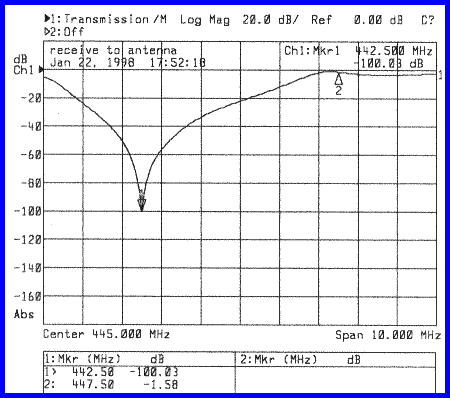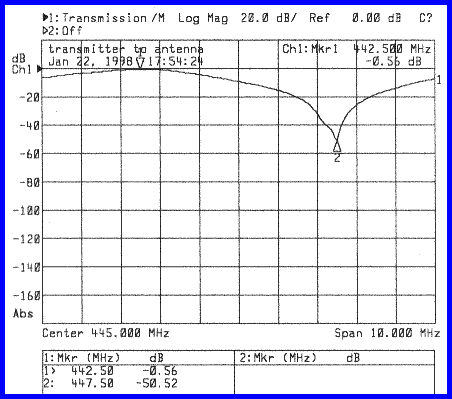Revised 5/31/12

SHARC-2 REPEATER - 442.500 MHz - Canonsburg, Pennsylvania
 | The spectrum plot on the left reflects the frequency spectrum between the duplexer's receiver port and antenna port. The first marker (1) represents the repeater's transmit frequency (442.500 MHz), and the second marker (2) represents the repeater's receive frequency (447.500 MHz).
The amount of attenuation is shown on the left vertical scale
As you can see, a -100.03 dB notch was tuned to the
The duplexers are manufactured by Phelps Dodge, and |
 | The spectrum plot on the right reflects the frequency spectrum between the duplexer's transmitter port and antenna port. The first marker (1) represents the repeater's transmit frequency (442.500 MHz), and the second marker (2) represents the repeater's receive frequency (447.500 MHz).
As you can see, a -50.52 dB notch was tuned to the receiver's frequency. Once again, this prevents the transmitter frequency from desensitizing the repeater's receiver. The overall transmitter loss through the duplexer is -0.56 dB.
All test data was taken on January 22, 1998, using a model 8714B Hewlett Packard RF Network Analyzer. Data was plotted using a Hewlett Packard Deskjet 850C.
Special thanks goes out to Filter Design Engineer, Paul Kruczkowski of Axcera for his expertise in tuning the duplexers. |




